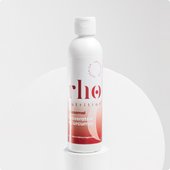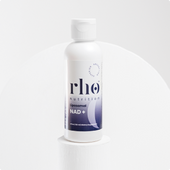Collagen has moved from niche wellness discussions into the mainstream, and for good reason. As the most abundant protein in the human body, collagen plays a central role in skin elasticity, joint mobility, bone density, and overall structural integrity. Yet, production naturally declines with age, and lifestyle factors such as UV exposure, smoking, and poor diet can accelerate this decline.
Collagen supplementation is now widely used to support skin appearance, joint comfort, and muscle recovery. But one common question remains: how much collagen should you take per day? Recommendations can vary significantly, from just a few grams to 20 grams or more, depending on the form, type, and intended benefit.
In this guide, we’ll break down research-backed dosage ranges, explore factors that influence individual needs, review safety guidelines, and help you make informed decisions about your daily collagen intake.
What is Collagen?
Collagen is a fibrous structural protein that provides strength and flexibility to connective tissues throughout the body. It is composed primarily of three amino acids, glycine, proline, and hydroxyproline, which form a triple-helix structure. This structure is key to collagen’s durability and resistance to stretching.
Your body produces collagen naturally, but the rate slows with age. By the time you reach your mid-40s, collagen synthesis may be reduced by as much as 25 percent. This decline contributes to visible skin changes, increased joint stiffness, and slower recovery from injuries.
Collagen supplements are not the same as simply consuming protein. They provide collagen-specific peptides and amino acid ratios that may help stimulate collagen production in the skin, cartilage, and bones.
Types of Collagen
Of the 28 known types of collagen, three are most relevant to human health and supplementation.
Type I Collagen
The most abundant collagen type in the body, Type I is found in skin, bones, tendons, and ligaments. It is essential for skin firmness, wound healing, and bone strength. Marine collagen supplements are particularly rich in Type I collagen, as are many bovine-sourced products.
Type II Collagen
Type II is primarily found in cartilage. It plays a critical role in cushioning joints and supporting flexibility. Most Type II collagen supplements are sourced from chicken sternum cartilage and are often taken for joint comfort.
Type III Collagen
Type III is found alongside Type I in skin, muscles, and blood vessels. It supports skin elasticity and cardiovascular structure. Bovine collagen supplements often contain a mix of Types I and III.
Multi-Type Collagen Supplements
Some formulations combine Types I, II, and III to target multiple systems at once, aiming to provide both cosmetic and structural benefits. These blends are popular for people who want comprehensive connective tissue support.
Forms Used in Supplements
Collagen supplements vary in processing and form, which influences both absorption and effective dosage.
Hydrolyzed Collagen
Also known as collagen peptides, hydrolyzed collagen is broken down into short chains of amino acids for easier absorption. Most clinical studies on collagen dosage use this form, often in powdered or capsule form.
Undenatured Collagen
Undenatured collagen retains its triple-helix structure and is typically taken in small doses—around 40 mg per day—for joint health. Instead of supplying building blocks, it works through a process called oral tolerance, which may help protect cartilage from immune system attack.
Gelatin
Gelatin is partially hydrolyzed collagen. While less common as a direct supplement, it appears in foods like gummies, soups, and desserts. Its research base is smaller than that of collagen peptides.
Powder vs. Capsules vs. Liquid
-
Powder: The most flexible option for adjusting dosage; can be added to drinks or recipes.
-
Capsules: Convenient but may require a large number of capsules to reach clinically studied doses.
-
Liquid: Pre-mixed and easy to take, but often more costly and less customizable.
How Much Collagen Should You Take Per Day?
The answer depends on your goals, the form of collagen, and the specific outcomes you’re targeting.
Research-based dosage ranges include:
-
Skin health: 2.5–10 g of hydrolyzed collagen daily has been shown to improve skin hydration, elasticity, and appearance in multiple studies.
-
Joint support: 5–10 g of collagen peptides per day, or 40 mg of undenatured collagen, has been linked to reduced joint discomfort and improved mobility.
-
Muscle support: 15–20 g daily, especially when paired with resistance training, can help maintain or increase lean muscle mass in older adults.
For most adults, staying within 2.5–20 g per day of collagen peptides is considered effective and safe.
Proper Dosage
Suggested Dosage from the Manufacturer
Always check your product’s label. Manufacturers often determine serving sizes based on the form, source, and intended benefits of their collagen.
Starting with Lower Doses
If you are new to collagen supplements, begin at the lower end of the recommended range and increase gradually as tolerated.
Factors Affecting Individual Needs
-
Age: Older adults may need higher doses to compensate for reduced collagen production.
-
Weight: Larger body mass may require more total protein, including collagen.
-
Activity Level: Athletes, especially those in high-impact sports, may benefit from a higher intake for recovery and joint protection.
-
Dietary Protein: If you already consume a high-protein diet, your collagen needs may be lower than someone with a lower overall protein intake.
Timing Considerations
Collagen can be taken at any time of day. Some studies suggest taking it before bed may support overnight repair, while others recommend post-workout intake for muscle recovery. Consistency is more important than timing.
Can You Take Too Much Collagen?
There is no official upper limit for collagen intake, but taking excessively high doses may lead to digestive discomfort such as bloating, heartburn, or diarrhea. Most studies have not tested doses above 20 g per day for hydrolyzed collagen or 40 mg per day for undenatured collagen.
While collagen is generally safe, it should be viewed as part of an overall balanced protein intake, not a replacement for all other protein sources.
Potential Side Effects
Most people tolerate collagen well, but mild side effects can occur:
-
Digestive changes, including bloating or feelings of fullness
-
Heartburn in sensitive individuals
-
Rare allergic reactions, especially if sourced from fish, shellfish, or other animal products
If you experience persistent discomfort, try reducing the dose or switching to a different source.
Who Should Avoid Collagen Supplements?
Collagen may not be appropriate for:
-
People with allergies to the source material (fish, bovine, chicken)
-
Individuals with kidney or liver conditions requiring protein restriction
-
Those advised to limit specific amino acids by their healthcare provider
Pregnant or breastfeeding women should consult a healthcare provider before beginning supplementation.
How to Choose a Quality Collagen Supplement
Third-Party Testing
Look for testing by independent labs to confirm purity, potency, and absence of heavy metals or contaminants.
Source and Manufacturing
Choose collagen sourced from responsibly raised animals or sustainable marine sources. Traceability and ethical sourcing are important for both safety and environmental impact.
Label Reading
Avoid proprietary blends that obscure the amount of each collagen type. Look for clear labeling of type(s), form, and amount per serving.
Quality Certifications
Certifications like NSF Certified for Sport, Informed-Choice, or USP verification can indicate higher manufacturing standards.
The Bottom Line
Collagen supplementation can support skin, joint, and muscle health when used consistently in research-backed doses.
For most people, the recommended doses are as follows:
-
2.5–10 g for skin benefits
-
5–10 g for joint support (or 40 mg undenatured collagen)
-
15–20 g for muscle maintenance with training
Choose a quality product, follow dosing guidelines, and make collagen part of an overall healthy diet and lifestyle. As always, consult a healthcare professional for personalized guidance.













Leave a comment